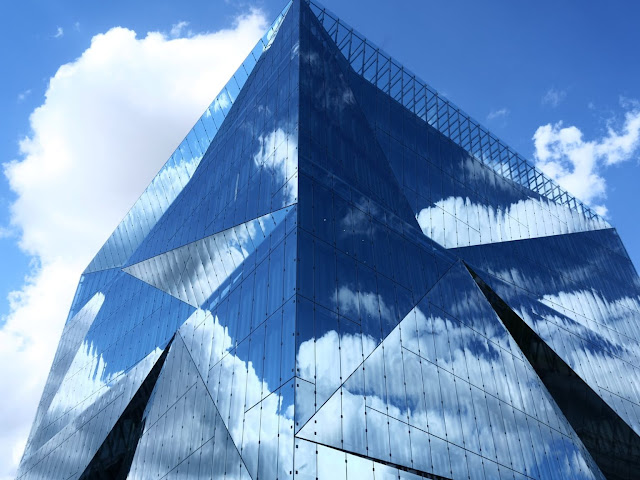What Is Facility Management? – Its Fundamentals And Why it Matters ?
Facility Management
Facility management might sound like a technical term, but in reality, it's all about making sure buildings and their services work together harmoniously. Think about your office, school, or even a hospital. Facility management ensures that everything from the lights and air conditioning to security systems and cleaning services runs smoothly. But why is it so important?
 |
What Is Facility Management? |
Evolution of Facility Management
Early Beginnings
Facility management isn't a new concept. In ancient times, civilizations like the Romans and Greeks had individuals responsible for maintaining public buildings and infrastructure. However, these roles were not as specialized as they are today.
Technological Advancements
Fast forward to the Industrial Revolution, and we see the role of facility management starting to take shape. Factories needed constant maintenance, and the advent of electricity and complex machinery required more specialized skills and knowledge.
Modern-Day Facility Management
Today, facility management has evolved into a sophisticated field, incorporating advanced technologies and methodologies. It's no longer just about fixing things when they break but about proactively managing buildings to enhance efficiency and comfort.
Fundamentals of Facility Management
Core Responsibilities
Facility managers wear many hats. Their core responsibilities include maintaining the physical infrastructure, ensuring safety and security, managing space, and overseeing services like cleaning and catering.
Key Areas of Focus
Maintenance Management: Ensuring that all equipment and systems are functioning optimally.
Space Management: Making the best use of available space.
Asset Management: Keeping track of all physical assets and ensuring their proper upkeep.
What is CMMS?
A Computerized Maintenance Management System (CMMS) is a software solution designed to streamline maintenance management. It helps organizations keep track of maintenance activities, schedule preventive maintenance, and manage assets efficiently.
.jpg) |
CMMS Software |
Importance of CMMS in Facility Management
CMMS is crucial because it brings order to what could otherwise be a chaotic process. By automating maintenance tasks and providing real-time data, CMMS Software improves productivity, reduces downtime, and extends the lifespan of assets.
How Does CMMS Work?
Basic Functionality
At its core, a CMMS helps facility managers schedule, track, and optimize maintenance activities. It stores information about the facility's assets, including their location, condition, and maintenance history.
Features of a CMMS
Work Order Management: Create, assign, and track maintenance tasks.
Preventive Maintenance Scheduling: Automatically schedule regular maintenance to prevent breakdowns.
Asset Management: Keep detailed records of all assets and their maintenance needs.
Inventory Management: Track spare parts and supplies.
Reporting and Analytics: Generate reports to analyze performance and identify areas for improvement.
Benefits of Using a CMMS
Improved Efficiency: Streamlines maintenance processes and reduces manual work.
Reduced Downtime: Preventive maintenance helps avoid unexpected breakdowns.
Cost Savings: Extends the life of assets and reduces the need for costly repairs.
Better Compliance: Helps ensure adherence to safety and regulatory standards.
Components of Effective Facility Management
Space Management
Maximizing the use of available space is critical. This involves planning the layout of workspaces, managing occupancy, and ensuring that the space meets the needs of its users.
Maintenance Management
Regular maintenance is key to preventing equipment failures and ensuring smooth operations. This includes both preventive maintenance and reactive repairs.
Asset Management
Effective asset management ensures that all physical assets, from HVAC systems to office furniture, are properly maintained and utilized.
Technologies in Facility Management
Internet of Things (IoT)
IoT devices can monitor various aspects of a facility, such as energy usage and equipment performance, providing real-time data that helps in making informed decisions.
Artificial Intelligence (AI)
AI can analyze data to predict maintenance needs, optimize energy usage, and even manage security systems more effectively.
Building Information Modeling (BIM)
BIM involves creating digital representations of buildings, which can be used for planning, construction, and facility management. It helps in visualizing and managing the physical and functional characteristics of a space.
Sustainability in Facility Management
Green Building Practices
Adopting green building practices reduces environmental impact. This includes using sustainable materials, energy-efficient systems, and waste reduction strategies.
Energy Management
Efficient energy management involves monitoring and optimizing energy usage to reduce costs and environmental impact. This can include everything from using LED lighting to implementing smart HVAC systems.
Waste Reduction
Effective waste management practices, such as recycling and composting, are essential for reducing a facility's environmental footprint.
Challenges in Facility Management
Common Issues
Facility managers often face challenges such as budget constraints, aging infrastructure, and the need to keep up with technological advancements.
Solutions and Best Practices
To overcome these challenges, facility managers should adopt a proactive approach, invest in training, and leverage technology to improve efficiency and effectiveness.
The Future of Facility Management
Emerging Trends
The future of facility management looks promising with trends like smart buildings, sustainable practices, and increased reliance on data analytics.
Predictions for the Industry
Expect to see more integration of advanced technologies, a greater focus on sustainability, and a shift towards more strategic roles for facility managers.
Conclusion
Facility management is a vital aspect of ensuring that buildings and their services function efficiently and effectively. From understanding its evolution and fundamentals to exploring advanced technologies like CMMS, facility management is about much more than just maintenance. It's about creating environments where people can work, learn, and thrive.



Comments
Post a Comment